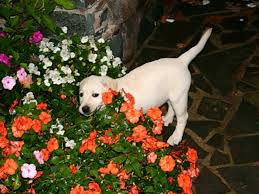Pet Safe and Toxic Plants
A Guide for Pet Parents
As a dog or cat owner in Western Pennsylvania, it’s essential to be aware of the plants in your environment—both indoors and outdoors—that can affect your pet’s health. Some plants are safe and beneficial, while others can be harmful.
By selecting the right plants and taking precautions, you can create a beautiful and safe environment for both you and your dog or cat. It’s important to watch out for any of the unsafe native plants and keep your dog or cat away from them when hiking or remove them from your yard if you happen to have any growing. This is a super easy way to keep your dog or cat healthy and happy!

Here’s a guide to help you navigate the local flora:
Indoor Houseplants:
Dog Safe:
Spider Plant (Chlorophytum comosum): Easy to care for and non-toxic.
Areca Palm (Dypsis lutescens): A tropical plant that’s safe for dogs.
Prayer Plant (Maranta leuconeura): Known for its beautiful foliage and safety.
Peperomia: A diverse group of small, compact plants with dog-safe varieties.
Cat Safe:
Spider Plant (Chlorophytum comosum): A resilient, low-maintenance plant known for its air-purifying qualities.
Boston Fern (Nephrolepis exaltata): A lush, non-toxic fern that thrives in humid environments.
Areca Palm (Dypsis lutescens): Also known as the butterfly palm, it’s safe for cats and adds a tropical feel to interiors.
Calathea (Calathea spp.): Known for its striking foliage, this plant is safe for cats.
Prayer Plant (Maranta leuconeura): Features unique leaf patterns and is non-toxic to cats.
African Violet (Saintpaulia spp.): A popular flowering plant that’s safe for cats.
Parlor Palm (Chamaedorea elegans): A hardy palm that’s safe for cats and suitable for low-light conditions.
Bromeliad (Bromeliaceae family): Brightly colored and safe for cats, though some varieties may have sharp edges.
Venus Flytrap (Dionaea muscipula): An insect-eating plant that’s non-toxic to cats.
Polka Dot Plant (Hypoestes phyllostachya): A decorative plant with colorful leaves, safe for cats.
Dog-Toxic:
Sago Palm (Cycas revoluta): Extremely toxic; even small amounts can cause severe reactions.
Philodendron: Contains compounds that can irritate the mouth and digestive tract.
Pothos (Epipremnum aureum): Can cause vomiting and oral irritation.
Peace Lily (Spathiphyllum): Contains calcium oxalates that can cause discomfort.
Snake Plant (Sansevieria trifasciata): Can lead to nausea and vomiting if ingested.
Cat Toxic:
Dieffenbachia (Dumb Cane) – Causes oral irritation, drooling, vomiting, and difficulty swallowing.
Peace Lily (Spathiphyllum spp.) – Causes oral irritation, drooling, vomiting, and difficulty swallowing.
Philodendron (various species) – Causes oral irritation, swelling of mouth and tongue, and vomiting.
Pothos (Epipremnum aureum, also called Devil’s Ivy) – Causes vomiting, oral irritation, and difficulty swallowing.
Aloe Vera – Causes vomiting, diarrhea, and lethargy.
Caladium (Elephant Ear) – Causes intense oral pain, drooling, and difficulty breathing.
Snake Plant (Sansevieria trifasciata) – Causes nausea, vomiting, and diarrhea.
ZZ Plant (Zamioculcas zamiifolia) – Can cause vomiting and diarrhea.
Jade Plant (Crassula ovata) – Causes vomiting, depression, and incoordination.
English Ivy (Hedera helix) – Causes vomiting, abdominal pain, and drooling.
Kalanchoe – Can cause vomiting, diarrhea, and heart arrhythmias in severe cases.
Western Pennsylvania Common / Native Outdoor Plants:
Dog-Safe:
Bee Balm (Monarda): Attracts pollinators and is safe for dogs.
Purple Coneflower (Echinacea purpurea): A hardy perennial that’s non-toxic.
Virginia Bluebells (Mertensia virginica): Early bloomers that are gentle on pets.
Christmas Fern (Polystichum acrostichoides): A classic fern that’s both hardy and non-toxic.
Dog-Toxic:
Mountain Laurel (Kalmia latifolia): All parts are poisonous to dogs.
Rhododendron (Rhododendron spp.): Ingestion can cause vomiting and lethargy.
Mayapple (Podophyllum peltatum): The unripe fruit and roots are toxic.
Foxglove (Digitalis purpurea): Contains compounds that affect the heart.
Cat-Safe:
Wild Bergamot (Monarda fistulosa) Pollinator magnet, aromatic, lavender flowers
Purple Coneflower (Echinacea purpurea) Durable, drought-tolerant, great for bees and butterflies
Columbine (Aquilegia canadensis) Red/yellow flowers, attractive to hummingbirds
Black-eyed Susan (Rudbeckia hirta) Long bloom time, attracts pollinators
New England Aster (Symphyotrichum novae-angliae) Late-season color, important for monarch butterflies
Wild Geranium (Geranium maculatum) Woodland native, delicate pink-purple flowers
Golden Alexander (Zizia aurea) Early bloomer, host plant for black swallowtail caterpillars
Cat-Toxic:
Mountain Laurel (Kalmia latifolia) Vomiting, weakness, cardiac issues, possibly fatal
Buttercups (Ranunculus spp.) Drooling, vomiting, diarrhea, skin irritation
Mayapple (Podophyllum peltatum) Vomiting, diarrhea, lethargy, possible liver damage
Foxglove (Digitalis purpurea) Irregular heartbeat, vomiting, diarrhea, potentially fatal
Wild Black Cherry (Prunus serotina) Breathing difficulty, shock, death
Jack-in-the-Pulpit (Arisaema triphyllum) Oral pain, drooling, vomiting, swelling of mouth and throat
Eastern Wisteria (Wisteria frutescens) Vomiting, diarrhea, depression
Note: Even non-toxic plants can cause mild gastrointestinal upset if ingested in large quantities. Always monitor your dog or cat’s behavior around plants and consult a veterinarian if you suspect poisoning.
Tips for a Safe Home & Garden:
Research Before Planting: Always verify the safety of a plant before introducing it to your home or garden.
Use Raised Beds or Fencing: Keep toxic plants out of reach by using barriers.
Train Your Dog: Teach commands like “leave it” to prevent your dog from chewing on plants.
Monitor Your Dog’s Behavior: Watch for signs of plant ingestion, such as drooling or vomiting.
Contact a Professional: If you suspect your dog has ingested a toxic plant, contact your veterinarian immediately.
For more information about plants that are toxic or safe for pets, you can refer to the ASPCA or Merck‘s websites.


